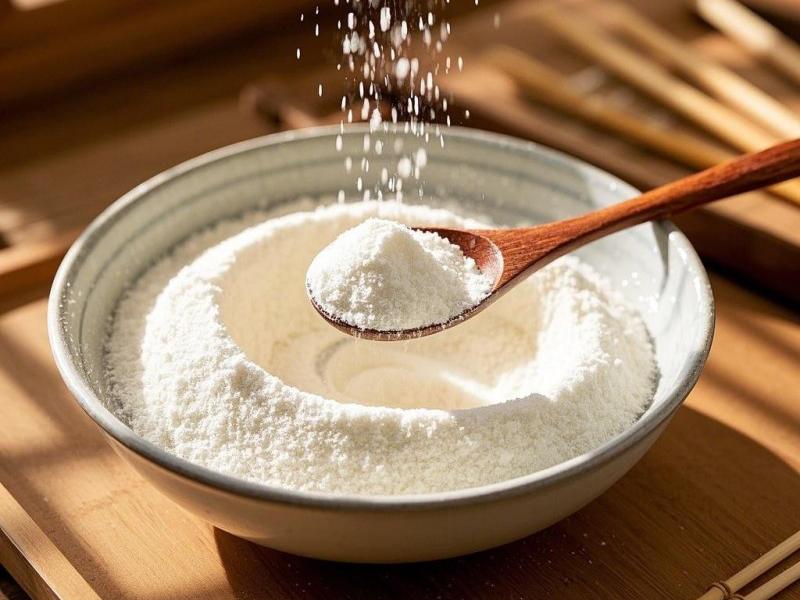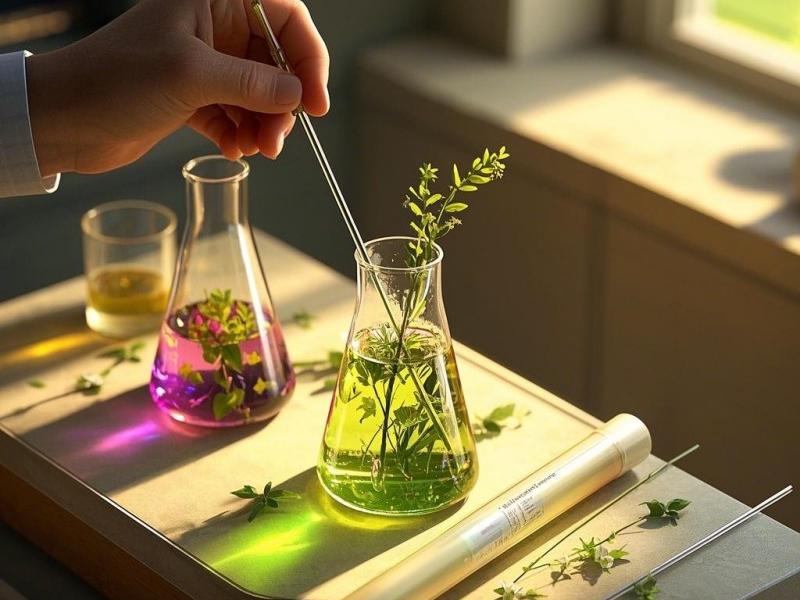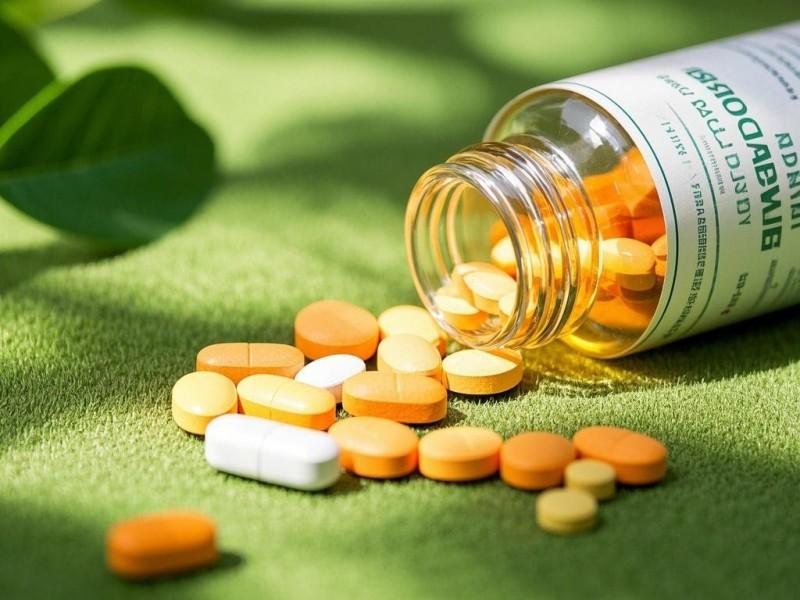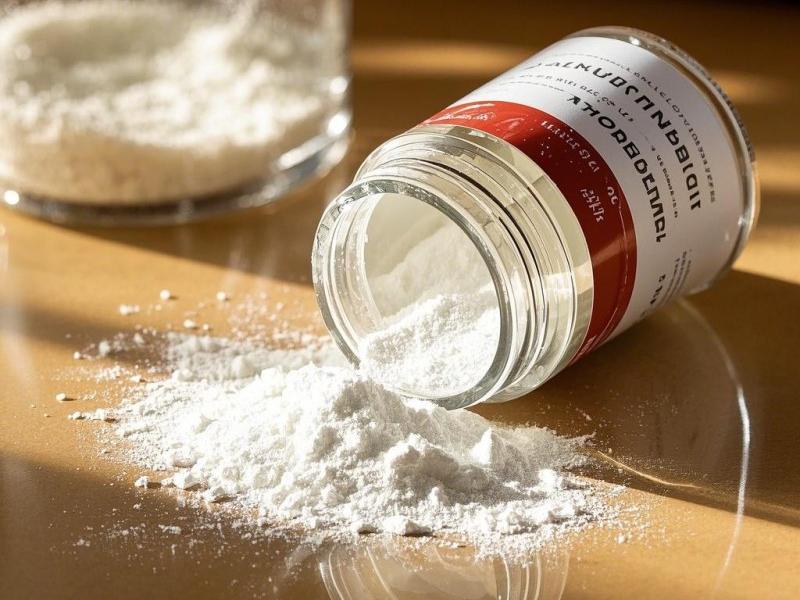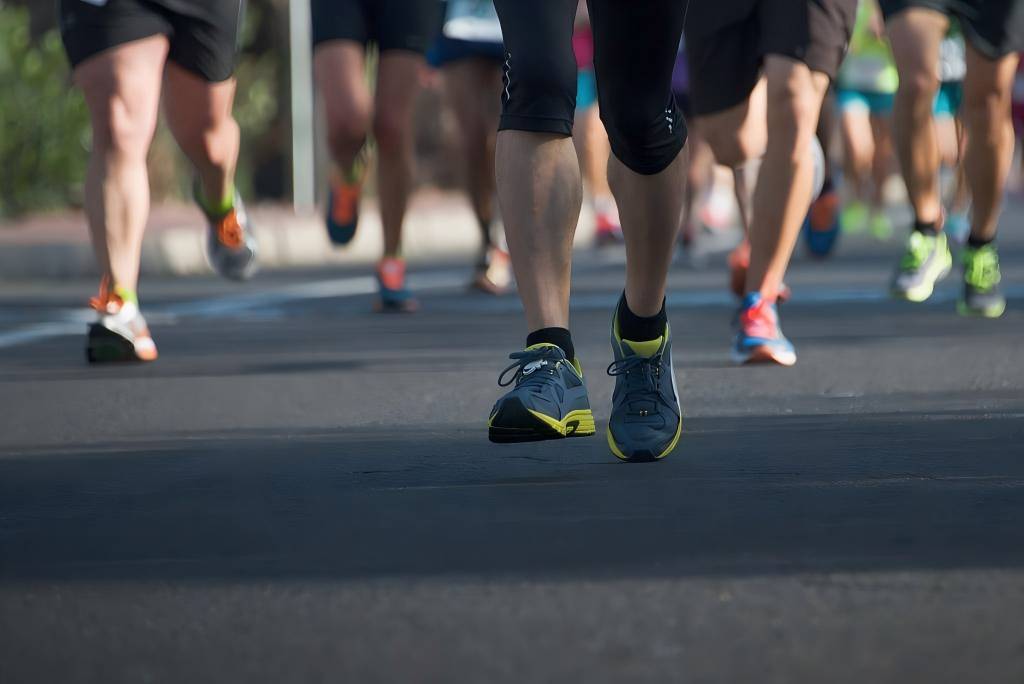What Are the Benefits of Octacosanol?
Since Crenton [1] showed in 1949 that octacosanol is a good class of biologically active compounds with excellent properties, a large number of researchers have devoted themselves to the extraction and preparation of the substance [2] and the research and application of its physiological functions [3-7]. At present, the main properties of this substance are: (1) enhancing stamina and resistance to fatigue; (2) promoting metabolism; (3) tolerance of hypoxia; (4) lowering blood lipids and resistance to atherosclerosis; (5) inhibiting liver oxygen metabolism disorders and acute liver damage; (6) anti-inflammatory; (7) anti-tumor; (8) improves sleep quality; (9) treats Parkinson's disease; (10) promotes skin blood circulation; (11) affects animal growth and reproductive function. Therefore, as a natural health additive, it is currently widely used in natural health products, medicines, sports drinks, cosmetics, and animal feed. Its research and development and purification are the focus of research at home and abroad. At present, the common methods for purifying this substance mainly include distillation [8], crystallization [9], molecular distillation [10] and supercritical CO2 extraction [11]. This paper reviews the research progress of the physiological functions and extraction methods of octacosanol, and provides a perspective on its application prospects.
1 Physiological functions of octacosanol
Octacosanol has excellent biological safety. Oral administration of octacosanol to mice for toxicity studies has shown that its LD50 value can reach 18,000 mg/kg, indicating its high safety. A large number of researchers are committed to the research and application of the physiological functions of this substance [4].
1.1 Enhances endurance, anti-fatigue, and anti-hypoxia
Studies have shown that this substance can improve human endurance, quickly restore physical strength [12-16], and improve relevant physiological indicators in body fluids after exercise. Zhong Geng et al. [17] found that this substance can prolong the duration of swimming with weights in mice, increase the content of glycogen in their body fluids, and significantly reduce the concentration of urea in the serum after exercise. Yang Xiaoying et al. [18] found that the substance can effectively reduce the effects of lipid peroxidation in the heart muscle after overload exercise, while enhancing the biological activity of the antioxidant enzyme SDT in rats to prevent damage to the heart muscle. The synergistic effect of the two greatly improves the mouse's fatigue resistance [18]. At the same time, this substance can regulate the endocrine function of the heart muscle in exercise-fatigued rats, effectively protect the heart, and enhance the endurance of mice [19]. Dong Yanguo et al. [20] showed that octacosanol has the effect of relieving fatigue in mice.
Octacosanol helps the body tolerate hypoxia and improves the body's ability to work in high altitude conditions. Gao Yuqi et al. [21] used a double-blind method to divide 38 healthy men who had been stationed on a 3,700m high plateau for more than a year into an experimental group and a control group to test the effect of octacosanol on military work capacity in high altitudes. It was confirmed that octacosanol can increase the oxygen reserve in the blood, thereby improving human labor. They also observed the microstructure of the heart and brain tissue of mice in both groups under hypoxic conditions, and found that the edema in the heart and brain tissue of mice fed with octacosanol was much less than that of the control group. Octacosanol can protect heart and brain tissue under hypoxic conditions and is beneficial to maintaining the normal function of heart and brain tissue under confined and hypoxic conditions [22].

1. 2 Promotes metabolism
Octacosanol has the function of promoting the body's metabolism [23-24]. Studies have found that the substance not only accelerates the consumption of muscle glycogen and fat metabolism during exercise in rats [25], but also effectively enhances the activity of rat heart muscle and PFK, NADH-Tr, succinate dehydrogenase (SDH) and ATPase, especially the most obvious enhancement effect on ATPase activity [26], which indicates that this substance can accelerate the energy consumption of mouse heart and skeletal muscle. After taking an appropriate amount of this substance, the secretion of adrenaline and glucagon in rats was significantly increased, and the expression of GS in the liver and muscles was also increased. The full expression of this gene promotes the metabolism of glycogen in the body [27]. Beijing Sport University [15] conducted a 35-day weight loss test on 32 athletes taking octacosanol. The test was divided into low, medium, and high dose groups and a control group. The medium dose group had the most significant weight loss effect, with an average weight loss of 2.45 kg, a fat loss of 2.27 kg, and a body fat rate decrease of 2.09%. The study also demonstrated the substance's effect on the human leptin receptor and its good weight loss and fat loss effects.
1. 3 Lowers blood lipids and cholesterol
As early as 2006, Zhong Geng et al. [17] already confirmed that octacosanol has the function of lowering blood lipids. Qi Xiaoming et al. [28] proposed that the hypolipidemic effect of octacosanol is related to the dosage. Higher doses of the substance can significantly reduce the content of TG, TC and LDL-C in the serum, and have no significant effect on HDL-C; while lower doses only affect the concentration of TC in the serum. Dev K. Singh et al. [29] proposed that behenyl alcohol reduces serum cholesterol levels by activating enzyme activity through the phosphorylation of AMP-kinase, thereby reducing HMG-CoA enzyme activity and achieving the goal of controlling serum cholesterol synthesis. Simonetta Oliaro-Bosso et al. [30] synthesized eicosanol and behenyl alcohol to regulate the activity of HMG-CoA enzyme and control the cholesterol content in the blood serum. Giuseppe Marazzi et al. [31] prepared a multi-nutrient mixture containing 28-hydroxycholesterol, which can significantly reduce hypercholesterolemia in elderly patients with high cholesterol and has shown to be highly safe and well tolerated. In addition, this substance has also been used to treat children with high cholesterol and can regulate the amount of cholesterol in the blood serum of children [32].
Many domestic and international studies and clinical trials have shown that octacosanol is as effective as or more effective than common lipid-lowering drugs in treating type 2 hyperlipidemia, with fewer side effects and better tolerance. One trial randomly selected more than 30,000 patients and divided them into groups for short-term or long-term treatment. The results showed that higher alkanol can quickly, effectively, and safely lower cholesterol levels in patients. Test data show that when a mixture of higher alkanol products is used for the first time for short-term treatment (6 to 8 weeks), cholesterol levels are significantly reduced. However, if the mixture is continued (for 2 months) and the dosage increased (to 20 mg), it is found that although LDL levels can be reduced by about 25% to 30%, HDL levels will increase significantly by 15% to 25%.

1. 4 Anti-atherosclerosis
Octacosanol has a certain alleviating and auxiliary effect on vascular damage caused by atherosclerosis in the human body. Fraga et al. found that octacosanol has a certain effect on alleviating and reducing lipid peroxidation in the blood, especially on CCL, which has a suppressive effect, thereby causing the peroxidation of lipids in rat liver microsomes to be expressed; at the same time, not only can it reduce the oxidation of VLDL, but it can also inhibit Cu2 +-induced lipid peroxidation of rat lipoproteins [33]. Adding octacosanol to the daily diet of atherosclerotic mice can significantly reduce the TG content in their serum after 5 weeks [34]. He Wensen et al. [35] observed rats fed with octacosanol for different periods (4, 8, and 10 weeks) and found that the levels of TG, TC, LDL-C, and TBA in the serum of mice showed varying degrees of decrease, indicating that octacosanol can effectively reduce the fat content in the serum, and the decrease in TBA content indicates that octacosanol can prevent liver function from becoming hardened.
1. 5 Anti-inflammatory, improves immune function, anti-tumor
Octacosanol also has a certain effect on the body's inflammatory response and pain relief [36]. Some scholars once isolated octacosanol from the leaves of a type of Sabicea species used to treat malaria in the Amazon, and experiments have shown that the substance has analgesic and anti-inflammatory effects [37], which is the first time that this substance has been found to be a type of anti-inflammatory active compound. Long-chain fatty alcohol substances isolated from the non-triacylglycerol fraction of evening primrose oil, of which octacosanol accounts for 7.64% [38], have been shown in experiments to effectively inhibit the secretion of interleukin 1β and tumor necrosis factor α (TNF-α), thereby exerting anti-inflammatory and anti-tumor effects. In addition, the substance can effectively reduce the rate of colon damage in mice with colitis and prevent inflammation by inhibiting the expression of inflammatory factors [39]. In vitro, octacosanol administration significantly reduced the mRNA or protein expression of pro-inflammatory cytokines and the phosphorylation of c-Jun N-terminal kinase and p38, and also partially inhibited lipopolysaccharide (LPS)-induced translocation of NF-κB and AP-1 [40], achieving the purpose of treating inflammation. Octacosanol can cause rapid proliferation of T and B lymphocytes and production of B cell hemolytic antibodies in the spleen tissue of mice by increasing the SRBC-DTH and spleen index of the mouse body [12]. Studies have shown that if athletes consume a daily dose of 20 mg of octacosanol before exercise, the CD4/CD8 value of T lymphocytes in their blood will increase significantly, thereby enhancing the body's immunity [41].
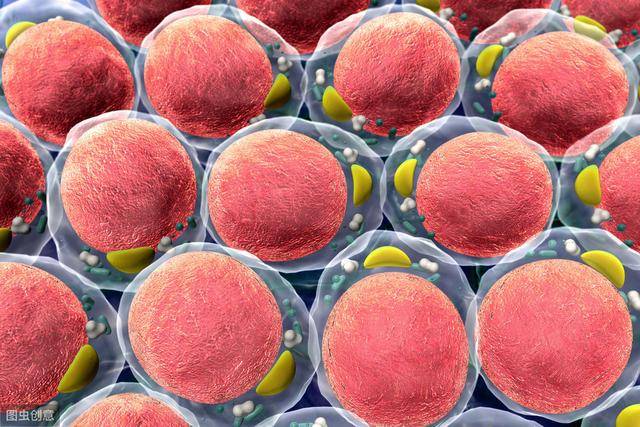
1. 6 Prevention and treatment of Parkinson's syndrome and Alzheimer's disease
Octacosanol has received widespread attention in the field of geriatric neurology because it has been shown to be highly safe and has a protective and nourishing effect on the nervous system. It has a good effect on preventing cell loss in diseases such as Alzheimer's disease. Wang Tao et al. [42] studied the protective effect of octacosanol on 6-hydroxydopamine-induced Parkinson's disease rats and explored whether the substance had an effect on pro-nerve growth factor (pro-NGF), NGF and downstream effector proteins. The results showed that taking the substance (35-70 mg/kg for 14 days) significantly relieved the behavioral disorders induced by 6-OHDA in rats and dose-dependently maintained the free radical scavenging capacity of the striatum. Octacosanol treatment also effectively improved the morphology of TH-positive neurons in the substantia nigra-striatum system and reduced 6-OHDA-induced apoptosis in the striatum.
In addition, octacosanol significantly blocked the 6-OHDA-induced overexpression of the proNGFp75NTR-sorting protein death signaling complex and its downstream effector proteins. At the same time, octacosanol prevented the decrease in the levels of the cell survival guidance factor NGF, as well as its receptors TrkA and p-Akt, thus confirming that the treatment of Parkinson's disease with octacosanol may improve the neural microenvironment by regulating the ratio of proNGF:NGF and their respective receptors p75NTR:TrkA in vivo. In addition, they found that oral docosanol (100 mg/kg) significantly improved the behavioral disorders of mice treated with MPTP and significantly improved the morphological expression of tyrosine hydroxylase-positive neurons in the substantia nigra. In addition, octacosanol blocked MPTP-induced phosphorylation of p38MAPK and JNK, but not ERK1/2. These findings suggest that the protective effect provided by octacosanol may be achieved by blocking the phosphorylation of p38MAPK and JNK in in vivo signaling. Octacosanol has excellent tolerability and may be considered as a candidate drug for clinical application in the treatment of Parkinson's disease [43].
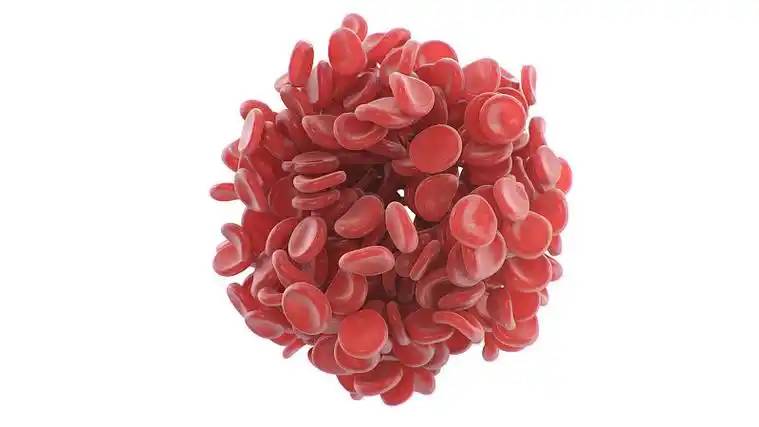
1. 7 Treatment of stress-induced insomnia
Mahesh K. Kaushik et al. [44] were the first to demonstrate that docosanol is a potent anti-stress compound with sleep-inducing potential [44]. Docosanol induces sleep by increasing the number of sleep episodes and reducing the duration of the wake period. Plasma cortisol levels were significantly reduced after administration of docosanol (200 mg/kg), indicating a decrease in stress levels. The changes in sleep-wake parameters in docosanol-induced stressed mice were comparable to those in normal mice.
1. 8 Prevention and treatment of osteoporosis
Docosanol can be used to prevent osteoporosis. Noam et al. [45] used ovariectomized rats as an experimental model and studied the skeletal changes in rats given 30 mg/(kg·d) 17β-estradiol, 50 mg/(kg·d) prasterone, or 200 mg/(kg·d) prasterone for 90 days. After a period of feeding, it was found that the amount of Ca2+ loss in the bones of rats in the pristanol administration group had decreased significantly, and the connecting gaps between the bone trabeculae had also contracted. Not only that, but the number and thickness of the bone trabeculae in the rats had also increased at an extremely fast rate. These phenomena indicate that pristanol, due to its structure of octacosanol, has a preventive effect on alleviating and treating osteoporosis in postmenopausal women.
Masuko et al. [23] also used rats as experimental subjects and conducted a feeding test with a mixture of high-carbon fatty alcohols. After one month of feeding, the bone strength was tested. The results showed that the bone fracture damage index of the rats in the feeding group could reach about 5.07 dynes, which was higher than the 4.70 dynes of the rats in the non-feeding group. This indicates that the consumption of docosanol can enhance the strength of the animal's bones. Comparing the bone composition of the two groups of rats, it was found that the concentration of Ca2+ and P3+ in the bone cells of the treated group of rats had increased significantly, which on the other hand indicates that docosanol has a certain effect on relieving and treating osteoporosis.
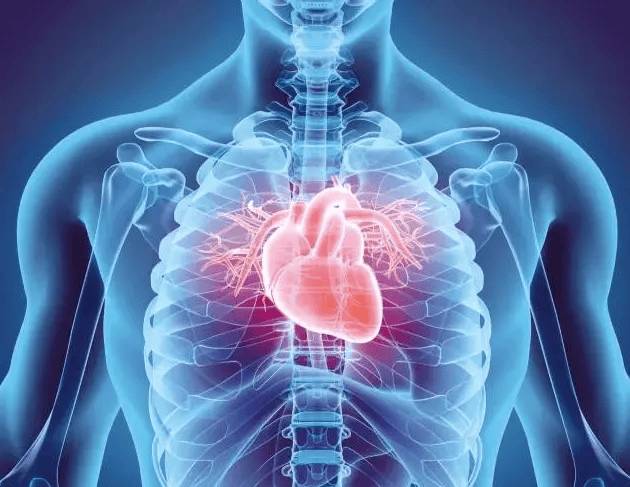
1. 9 Antitumor
G. Thippeswamy et al. [46] first reported that octacosanol can be used as a new anti-angiogenic and antitumor drug, and has an inhibitory effect on in vivo angiogenesis tests. This study showed that the substance has the following functions: (1) it inhibits the proliferation of endothelial cells and Ehrlich ascites tumor cells; (2) it inhibits neovascularization induced by angiogenic factors in the bile duct urothelium and cornea; and (3) it inhibits the secretion of ascites from tumor cells growing in vivo. The mechanism of action is that octacosanol suppresses the secretion of vascular endothelial growth factor into the ascites through tumor cells. At the molecular level, octacosanol significantly inhibits the activity of matrix metalloproteinases and the translocation of -bkappaNB to the nucleus.
The mechanism by which eicosapentyl alcohol inhibits angiogenesis reflects its effect on tumor angiogenesis and metastasis. Bingyang Chu et al. [47] showed that eicosapentyl alcohol exhibits excellent anti-tumor activity by inhibiting the activity of matrix metalloproteinases (MMPs) and the translocation of the transcription factor (nuclear factor-κB, NF-kB) to the nucleus. In the group's research, poly (ethylene glycol)-derived octacosanol copolymers were used as drug carriers to improve the antitumor activity and eliminate the toxicity of commercial paclitaxel preparations. The results showed that micelles carrying paclitaxel of this type have significant antitumor properties in vivo and lower systemic toxicity in 4T1 breast cancer.
1. 10 Inhibits platelet aggregation
Polyhydroxystearic acid with a stearyl alcohol structure may have a good effect on inhibiting platelet aggregation. After Mongolian hamsters were fed 200 mg/kg of polyhydroxystearic acid for a long-term feeding experiment, it was found that the number of deaths caused by cerebral infarction in Mongolian hamsters decreased significantly. The reason may be that pristane reduces the concentration of arachidonic acid, collagen and adenosine diphosphate (ADP) in the body of the jumping mouse, thereby inhibiting their co-induced platelet aggregation [32]. GastnoG et al. [48] used elderly people with diabetes as the research subjects and administered 10 mg/d of prilocaine, and after 42 days, it was found that the inhibition of platelet aggregation caused by arachidonic acid at concentrations of 1.5 and 3 mmol/L, ADP at 1 mmol/L, and collagen at 0.5 mmol/L in their blood could reach 45%, 70%, 20%, and 17%, respectively. The data proves that octacosanol has a good inhibitory effect on platelet aggregation.
Arruzazabal et al. [49] further investigated the effect of different concentrations of polyglycerol on the inhibition of platelet aggregation. They found that when the concentration of polyglycerol was between 5 and 20 mg, it had a concentration-dependent inhibitory effect on platelet aggregation, and the inhibition rate increased with increasing concentration. However, when the concentration of polyglycerol was >20 mg, the inhibitory effect began to gradually stabilize and would not change significantly with changes in concentration. In other words, purinol has little effect on indicators related to platelet aggregation, such as bleeding and clotting time. After this study, Menendez also found that the degree to which octacosanol resists platelet aggregation caused by adrenaline was 32.6%, which was much greater than aspirin's 21.9%.
1. 11 Protects the liver and heart
Octacosanol can reduce the liver damage caused by carbon tetrachloride (CCl4) poisoning in rats and the resulting disorder of oxygen metabolism [50]. When rats poisoned with CCl4 for 6 hours were given the substance orally (10, 50 or 100 mg/kg), the activity of serum transaminases increased, the activity of liver superoxide dismutase, catalase and glutathione (GSH) decreased 24 hours after poisoning, and these changes were dose-dependent. The substance can reduce the disorder of hepatic active oxygen metabolism associated with the progression of acute liver damage in rats poisoned with CCl4, and protect the liver.
Octacosanol also protects the mitochondria of cardiomyocytes and prevents damage to the heart muscle. Experiments have shown that it not only enhances motor function to a certain extent in rats, effectively regulating the endocrine system of cardiomyocytes, but also reduces the amount of MDA in the mitochondria of cardiomyocytes after exhausting exercise, and enhances the activity of antioxidant enzymes such as SOD and GSH-Px. The reason for this is that after exhausting exercise, there are many free radicals in the rat's body, and these free radicals can cause damage to the cardiomyocytes. Octacosanol can reduce the peroxidation of lipids, thereby reducing free radical damage to cardiomyocyte mitochondria, ensuring the integrity and structural specificity of cell membranes, and ultimately protecting the heart [51].
1.12 Mitigates the symptoms of type 2 diabetes
Octacosanol can be used to alleviate the symptoms of type 2 diabetes by reducing the levels of TC, TG, LDL-C, etc. in the blood. In in vitro studies that have been conducted, it has been found that polyglycerol, which is extracted from rice bran and contains a large amount of octacosanol, can promote the production of a large amount of insulin [52], thereby reducing blood sugar. In addition, it can reduce the anti-insulin index in patients, reduce the synthesis of total/low-density lipoproteins, lower the blood glucose content of patients, and relieve the constriction of arterial blood vessels [53]. It has been proven that in patients with type 2 diabetes who were treated with lovastatin and pristanol for 8 weeks, the concentrations of LDL-C and TG in the blood decreased significantly [54].
1. 13 Effects on the reproductive system and growth of animals
L. Long et al. [55] found that octacosanol is a potentially effective and safe feed additive that can improve the feed efficiency and meat quality of broilers, and increase the yield of internal organs and pectoral muscles. In addition, L. Long et al. [56] found that the addition of octacosanol to the diet had a significant effect on the egg-laying ability, egg quality, serum hormone levels and gene expression of the reproductive axis in laying hens. In addition, the daily addition of octacosanol to the feed can significantly affect the levels of serum triiodothyronine, estradiol and progesterone. The intake of 28-hydroxycholesterol can also promote the mRNA expression of luteinizing hormone receptors and prolactin receptors in the follicles of laying hens, and significantly upregulate the expression level of F1 granulocytes. Lei Long et al. [57] found that 28-hydroxycholesterol can promote the secretion of iodothyronine (T3), glucagon (GU), growth hormone (GH) and adrenalin (AD), and increased the gene expression of glucose transport protein (GLUT-4) and adenosine monophosphate protein kinase (AMPK) in muscle and liver tissue. It controls the body's energy balance through two pathways: hormones and gene expression, to improve growth performance, reduce weaning stress and reduce the incidence of diarrhea. This information may provide a scientific basis for the development of 28-hydroxyoctacosane as a safe and effective feed additive and its potential application in livestock.
2 Distribution and extraction of 28-hydroxyoctacosane
2. 1 Distribution of 28-hydroxyoctacosane
28-Hydroxyoctacosane is a natural higher alcohol that is mainly found in the epidermis and internal organs of animals and in the tissues of plants such as roots and stems. 28-Hydroxyoctacosane in the epidermis and internal organs of animals is mainly found in the form of wax and free. At present, more research has been done on octacosanol in the form of wax, such as lanolin wax and shellac wax. The content of this substance in beeswax is relatively high. In fruits, octacosanol is mainly distributed in the waxy peel, especially in the peel of apples, which has a high content of 221.8 mg/kg. A small amount is also found in the flesh of a few fruits, such as plums and grapes (7.1 and 0.9 mg/kg respectively). In nuts, octacosanol is mainly found in hazelnuts, peanuts, pine nuts, melon seeds and almonds. The relative content can reach 75.25% and 64.9% in pine nuts and hazelnuts respectively. In crops, it is mainly found in barley, corn and rice, with relative contents of 20.5%, 68.8% and 35.4%, respectively, and is mainly distributed in the germ and de-embryo grains of crops.
2.2 Extraction of octacosanol
Common methods for preparing octacosanol include rectification [8], crystallization [9], molecular distillation [10], and supercritical CO2 extraction [11].
The rectification method mainly uses the different boiling points of substances to extract the target product. This method usually has high process requirements, and the purity of the target product increases with the number of rectifications. However, the number of rectifications increases the extraction cost, and there is a maximum number of rectifications. Increasing the number beyond the maximum value will not result in a purer product. The method of atmospheric distillation has the advantages of simple equipment and low cost, but the purity of the product is low, and other purification methods need to be combined to obtain a purer product [8]. Jin Baoyuan et al. [58] used vacuum distillation to extract octacosanol from beeswax. The crude product selected in this method contains impurities such as lower alcohols, higher alcohols and aliphatic hydrocarbons. In order to extract the target substance, the method of distillation is used. A glass distillation column is used, and about 100 g of material is charged each time.
The crystallization method involves dissolving the mixture in a specified solvent, then cooling and recrystallizing to control the cooling conditions to cause the target substance to recrystallize, thereby increasing its purity. Song Jianhua et al. [9] used the crystallization method to isolate a product containing octacosanol from Chinese specialty insect wax.
Molecular distillation is a method that operates under vacuum. Under these conditions, the mean free path of a vapor molecule is greater than the distance between the evaporation surface and the condensation surface. The mean free path of different species of molecules during motion is also different, so different substances can be separated based on this difference. This method has the advantages of low evaporation temperature, good results, and no pollution compared to atmospheric distillation and vacuum distillation. Most importantly, due to the different principles, substances that cannot be separated by atmospheric and vacuum distillation can be separated using this method. The disadvantages are that the equipment is more complex and the cost is higher. Xu Songlin et al. [10] used molecular distillation to extract the substance from beeswax. The advantage of this method is that the residue can be used as the raw material for the next distillation, which can be repeated to improve the final yield of the product. Zhang Xiangnian et al. [59] also further purified the crude high-carbon alcohol product by molecular distillation. The selected temperature was 200°C and the pressure was 0.5 Pa. The final product contained up to 96% high-carbon alcohol, of which 16.7% was octacosanol.
Supercritical CO2 extraction has the advantages of high purity and wide applicability, but the cost is high, and the current incomplete parameters have limited the development of this method. Chen Weiping [60] successfully separated octacosanol from bagasse using supercritical CO2 extraction, and analyzed the effects of temperature, pressure, flow rate, time and carrier on the extraction rate in the supercritical CO2 extraction method. Zhang Lei et al. [61] successfully separated octacosanol from rice bran using supercritical CO2 extraction. The effects of different temperatures, pressures and times on extraction were analyzed, and the optimal parameters were obtained as an extraction pressure of 50 Pa, an extraction temperature of 40 °C, and an extraction time of 50 min. Under these conditions, the purity of the target substance was high. With the development of molecular distillation and supercritical CO2 extraction, a single extraction method is no longer sufficient to meet the process requirements. It is possible to try to combine the two to obtain a higher purity of the target substance.
3 Application and prospects of octacosanol
3. 1 Application of octacosanol
Octacosanol has a wealth of physiological functions and is of great value in many applications. It is currently widely used in food additives and pharmaceuticals. Lin Xiaohui [62] added octacosanol to a bitter buckwheat drink, which made the drink effective in relieving fatigue and enhancing physical strength and endurance. This enriched the drink's functionality and improved its competitiveness. Zhang Zesheng et al. [63] invented a coffee mate with added octacosanol. The formula contains no more than 1% of the powdered octacosanol, which can help fight fatigue, enhance physical strength and lower cholesterol, meeting people's growing needs. Gladys Castao et al. [64] found that poly-n-octacosanol, represented by octacosanol, is effective in the treatment of elderly patients with hypercholesterolemia, and is highly safe and well tolerated. Gao Wenxiang et al. [65] successfully applied octacosanol in the preparation of drugs to prevent and treat highland polycythemia, making the capsules able to effectively reduce the increase in red blood cells caused by long-term chronic hypoxia, with no toxic side effects.
Octacosanol powder also has important applications in the sports drink and skin care product industries. Yang Fei et al. [66] invented a beverage (with an addition of 0.1 to 5 mg) containing octacosanol, which is a typical sports drink. This substance can accelerate blood circulation in the skin, and can be added to cosmetics to have a skin care effect.
3.2 Prospects for octacosanol
Octacosanol is found in small amounts in both plants and animals, and it is of some practical significance to extract octacosanol from wheat, rice, etc. There is a lot of room for research into developing drugs based on octacosanol for clinical use. Octacosanol can make up for the deficiencies of the functional drinks currently on the market. However, the current application of octacosanol is mainly limited by several factors: (1) the preparation and extraction process is immature, with high consumption and high cost; (2) the toxicological safety research on octacosanol is still based on animal experiments, and there is less clinical application. In order to solve the above problems, the future development direction of octacosanol is to first optimize the extraction and purification process and establish a mature extraction and purification technology. At the same time, the clinical research process of the substance should be accelerated, and the theoretical application should be tested in actual clinical trials.
References
[1] Crenton T K. The physical effect of wheat germ oil on human in exercise [M]. Illinois : Charles C Thomas Press , 1976.
[2] Li Q M. Extraction and distribution of octacosanol [J]. Journal of Food Safety and Quality Testing, 2013, 4(1): 279-282.
[3] Sun Y, Zhang H Y, Rao G X. Research and development progress of natural octacosanol [J]. Journal of Yunnan University of Traditional Chinese Medicine, 2006, 29(5): 52-54.
[4] Guo Tianyi, Luo Feijun. Research progress on the physiological functions of octacosanol [J]. Cereals, Oils and Foodstuffs, 2017, 30(3): 26-30.
[5] Mao Jia, Chen Jianhua, Huang Shaolie. Research progress of octacosanol [J]. Guangdong Chemical Industry, 2007, 34(3): 56-57.
[6] Yang Hao, Cai Lichuang, Xiang Yang, et al. Research and application progress of the active substance octacosanol [J]. Fine Chemical Industry Intermediates, 2011, 41 (5): 7-9.
[7] Duan Qiongfen, Ma Liyi, Zheng Hua, et al. Research overview of several higher alkanols [J]. Forest Chemical Industry Newsletter, 2005, 39 (2): 42-46.
[8] Guan Xingying. Extraction and isolation of octacosanol from beeswax [J]. Chinese Medicine Modern Distance Education, 2011, 9(16): 141-142.
[9] Song Jianhua. A method for manufacturing a natural straight-chain higher alcohol: 200410041810. 8[P]. 2005-8-25.
[10] Xu Songlin. A mixture of high-grade primary fatty alcohols extracted from beeswax and a method for separating and purifying it: 03110099. 6[P]. 2003-10-22.
[11] Du Hongxia. Research progress on octacosanol [J]. Cereals, Oils and Fats, 2005, 5 (6): 13-15.
[12] Cao Ziran, et al. The effect of octacosanol on the immune function and swimming endurance of laboratory animals [J]. Food Science, 2004, 25(7): 158-159.
[13] Enoki T, Sagawa H, Tominaga T, et al. Drugs, foods or drinks with the use of algae-derived physiologically active substances: 0105029 A1 [P]. U. S. Patent, 2003.
[14] Chen Fang, Chen Guanghua, Tian Ze, et al. Study on the anti-fatigue effect of octacosanol extract [J]. Journal of Nutrition, 2006, 28(3): 269-270.
[15] Wu Miaomiao. The effect of octacosanol on some biochemical indicators of athletes [D]. Beijing: Beijing Sport University, 2007.
[16] Chen Fang. Extraction and purification of octacosanol from rice bran and its anti-fatigue function [D]. Beijing: China Agricultural University, 2003.
[17] Zhong Geng, Wei Yimin. Study on the function of octacosanol oil capsules in relieving physical fatigue and lowering blood lipids [J]. Chinese Journal of Cereals, Oils and Foodstuffs, 2006, 21 (5): 89-92.
[18] Yang Xiaoying, Liu Huagang, Lin Jingsong, et al. Study on the effect of octacosanol preparations on biochemical and myocardial antioxidant indices in rats with exercise fatigue [J]. Shaanxi Medical Journal, 2008, 37(3): 273-275.
[19] Yang Xiaoying, Li Huagang, Lin Jingsong, et al. Effects of octacosanol preparations on free radical metabolism and cardiac endocrine function in rats with exercise fatigue [J]. Journal of Southern Medical University, 2008, 28(4): 652-653.
[20] Dong Y, Qiu Z. The effect of octacosanol on relieving physical fatigue in mice [J]. Chinese Journal of Biological Products, 2017, 30(4): 386-389.
[21] Liu Fuyu, Zhou Qiquan, Gao Yuqi, et al. Field experimental study on the effect of octacosanol on enhancing the ability of plateau military operations [J]. Southwest National Defense Medicine, 2009, 19(7): 670-671.
[22] Liu Fuyu, Wang Kunping, Gao Yuqi, et al. A preliminary study on the protective effect of octacosanol on hypoxic rats [J]. Southwest National Defense Medicine, 2010, 20 (6): 649-651.
[23] Yang H. Preparation of octacosanol and its effects on energy metabolism and mechanism research [D]. Changsha: Changsha University of Science and Technology, 2012.
[24] Xiang Y, Yang H, Wu X, et al. Research and application progress of octacosanol in regulating energy metabolism [J]. Journal of Xinxiang University, 2012, 29 (1): 44-46.
[25] Kato S, Kartimo K I, Hasegawa S. Octacosanol affects lipid metabolism in rats fed on a high fat diet [J]. British Journal of Nutrition, 1995(73) :433-441.
[26] Huo Junsheng, Han Yashan, Shi Jieping, et al. Effects of octacosanol on energy metabolism in mouse heart and skeletal muscle [J]. Journal of China Agricultural University, 1993, 1 (3): 5-7.
[27] Xiang Yang, Yang Hao, Li Lilong, et al. Study on the regulation of GS gene expression in rats by octacosanol [J]. Journal of Xinxiang University (Natural Science Edition) , 2012, 29(1) :47-51.
[28] Qi Xiaoming, Liu Bingchen, Lv Rong, et al. Study on the hypolipidemic effect of octacosanol [J]. Journal of Shanxi College of Traditional Chinese Medicine, 2017, 18(4) : 14-15.
[29] Dev K. Singh, Li Li, Todd D. Porter. Policosanol inhibits cholesterol synthesis in hepatoma cells by activation of AMP- Kinase [J]. Journal of Pharmacology and Experimental Therapeutics, 2006, 318(3) : 1020-1026.
[30] Simonetta Oliaro-Bosso ,et al. Regulation of hmgcoA reduc- tase activity by policosanol and octacosadienol ,a new syn- thetic analogue of octacosanol [J].Lipids ,2009,44( 10) : 907-916.
[31] Giuseppe Marazzi, et al. Long-term effects of nutraceuticals (berberine, red yeast rice, policosanol) in elderly hyper-cholesterolemic patients [J]. Advances in Therapy, 2011, 28(12): 1105-1113.
[32] Guardamagna, F. et al. The treatment of hypercholesterolemic children: efficacy and safety of a combination of red yeast rice extract and policosanols [J]. Nutrition, Metabolism & Cardiovascular Diseases, 2011, 21 (6): 424-429.
[33] Guo Zhi, Xu Li. Natural high-grade alkanol mixture: a new cholesterol-lowering drug from sugarcane wax. Foreign Medicine (Phytomedicine Supplement), 2001 (6): 231-236.
[34] Zuyuan Xu, et al. Dietary octacosanol reduces plasma triacylglycerol levels but not atherogenesis in apolipoprotein E-knockout mice [J]. Nutrition Research, 2007, 27(4): 212-217.
[35] Wensen He, Xiaojing Si, Huihui Wang, et al. Research on the regulation of rat lipid metabolism by octacosanol [J]. Modern Food Science, 2016, 32 (10): 28-33.
[36] Guo Tianyi. Mechanism of the anti-inflammatory effect of n-octacosanol [D]. Changsha: Central South University of Forestry and Technology, 2017.
[37] Anderson Marques de Oliveira, et al. Antinociceptive and anti-inflammatory effects of octacosanol from the leaves of sabicea grisea var. grisea in mice [J]. International Journal of Molecular Sciences, 2012, 13(2): 1598-1611.
[38] S. Montserrat-de la Paz, et al. Long-chain fatty alcohols from evening primrose oil inhibit the Inflammatory response in murine peritoneal macrophages[J]. Journal of Ethno-pharmacology, 2014, 151 (1): 131-136
[39] Guo Tianyi, Luo Feijun, Wang Long, et al. Octacosanol inhibits DSS-induced mouse colitis and its molecular mechanism [J]. Cereals, Oils and Fats, 2017, 30(2): 31-36.
[40] Tianyi Guo, Qinlu Lin, Xinhua Li, et al. Octacosanol attenuates inflammation in both RAW264. 7 macrophages and a mouse model of colitis [J]. Journal of Agricultural and Food Chemistry, 2017, 65(18): 3647-3658.
[41] Li Shaoying . The effect of octacosanol on the immune function of cyclists [D]. Jinan: Shandong Normal University, 2007.
[42] Tao Wang, Yanyong Liu, Pingping Zuo, et al. Protective effects of octacosanol on 6-hydroxydopamine-induced Parkinsonism in rats via regulation of ProNGF and NGF signaling [J]. Acta Pharmacologica Sinica, 2010, 31 (7): 765-774
[43] Wang Tao ,Liu Yanyong ,Yang Nan ,et al. Anti-parkinsonian effects of octacosanol in 1-methyl-4-phenyl-1 ,2 ,3 ,6 tetrahydropyridine-treated mice [J]. Neural Regeneration Research ,2012,7(14) : 1080-1087.
[44] Mahesh K. Kaushik, et al. Octacosanol restores stress-affected sleep in mice by alleviating stress [R]. Scientific Reports, 2017, 7(1): 8892.
[45] Miriam Noa, Sarahí Mendoza, Rosa Más, et al. Effect of policosanol on carbon tetrachloride-induced acute liver in Sprague-Dawley rats [J]. Drugs in R&D, 2003, 4 (1): 29-35.
[46] G. Thippeswamy, et al. Octacosanol isolated from Tinospora cordifolia downregulates VEGF gene expression by inhibiting nuclear translocation of NF-bkappaNB and its DNA binding activity [J]. European Journal of Pharmacology, 2008, 588 (2-3): 141-150.
[47] Bingyang Chu ,et al. PEG-derivatized octacosanol as micellar carrier for paclitaxel delivery [J]. International Journal of Pharmaceutics ,2016,500(1-2) :345-359.
[48] Castno G, et al. Effects of policosanol and pravastain on lipid profile, platelet aggregation and endothelemia in older hypercholesterolemic patients. International Journal of Clinical Pharmacology Research, 1999, 19(4): 105-116.
[49] M. L. Arruzazabala, et al. Protective effect of policosanol on atherosclerotic lesions in rabbits with exogenous hyper-cholesterolemia [J]. Brazilian Journal of Medical and Biological Research, 2000, 33(7): 835-840.
[50] Yoshiji Ohta ,Koji Ohashi ,Kazuo Yamada ,et al. Octacosanol attenuates disrupted hepatic reactive oxygen species metabolism associated with acute liver injury progression in rats intoxicated with carbon tetrachloride [J]. Journal of Clinical Biochemistry and Nutrition , 2008, 42(2) : 118-125.
[51] Yu Changqing. Study on the anti-mitochondrial damage of 28-hydroxyoctacosanol in rat heart [J]. China Food Additives, 2003(2): 35-37.
[52] Kaup R M, Khayyal M T, Verspohl E J. Antidiabetic effects of a standardized Egyptian rice bran extract [J]. Phytotherapy Research, 2013, 27(2): 264-271.
[53] Affuso F ,et al. A nutraceutical combination improves insulin sensitivity in patients with metabolic syndrome [J]. World Journal of Cardiology ,2012,4(3) :77-83.
[54] Casta o G ,et al. Effects of policosanol and lovastatin on lipid profile and lipid peroxidation in patients with dyslipi- demia associated with type 2 diabetes mellitus [J]. Int. Clin. Pharmacol. Res ,2002,22(3 /4) : 89-99.
[55] L. Long, S. G. Wu, F. Yuan, et al. Effects of dietary octacosanol on growth performance, carcass characteristics and meat quality of broiler chicks [J]. Asian-Australasian Journal of Animal Sciences, 2016, 29(10): 1470-1476.
[56] L. Long, S. G. Wu, F. Yuan, et al. Effects of dietary octacosanol supplementation on laying performance, egg quality, serum hormone levels, and expression of genes related to the reproductive axis in laying hens. Poultry Science, 2017, 96(4): 894-903.
[57] Lei Long ,Shugeng Wu ,Guanghai Qi ,et al. Effects of octacosanol extracted from rice bran on blood hormone levels and gene expressions of glucose transporter protein-4 and adenosine monophosphate protein kinase in weaning piglets [J].Animal Nutrition ,2015,1 (4) :293-298.
[58] Jin Baoyuan, Yin Shengzhen, Li Hanmo, et al. Preparation of eicosane alcohol from Changbai Mountain beeswax. Journal of Yanbian Medical College, 1989, 12 (4): 256-258.
[59] Zhang Xiangnian, et al. Preparation of high-carbon alcohols containing octacosanol in small quantities [J]. Chinese Journal of Pharmaceutical Industry, 2002, 33(3): 112-113.
[60] Chen Weiping. Research on the application of supercritical fluid technology for the extraction of the food additive octacosanol [D]. Xi'an: Northwest University, 2003: 1-56.
[61] Zhang Lei, Liu Cuijuan, Zhou Fengying, et al. Study on the extraction of octacosanol from rice bran [J]. Journal of Jiamusi University, 2007, 25(6): 851-853.
[62] Lin Xiaohui. Development of a bitter buckwheat tea beverage containing octacosanol [J]. Experimental Report and Theoretical Research, 2010, 13(9): 23-25.
[63] Zhang Zesheng, Liu Wei. Coffee mate containing octacosanol and its preparation method: 200610130481. 3 [P]. 2006-12-21.
[64] Gladys Castao ,Rosa Más J. C. Fernández ,et al. Effects of policosanol in older patients with type II hypercholesterol- emia and high coronary risk [J].Journal of Gerontology : Medical Sciences ,2001,56(3) : 186-192.
[65] Gao Wenxiang, Gao Niuqi, Liu Fuyu, et al. Application of octacosanol in the preparation of drugs for the prevention and treatment of highland polycythemia: 200810069455.3 [P]. 2008-03-11.
[66] Yang Fei, Liu Wei, Yuan Feng. Beverage containing octacosanol and method for preparing the same: 200610013127.2 [P]. 2006-01-25.


 English
English French
French Spanish
Spanish Russian
Russian Korean
Korean Japanese
Japanese